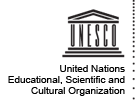A GENDER LOOK INTO THE BRAZILIAN MEDIA ENVIRONMENT
Women's voices are essential to the development of societies. In order to strengthen women’s voices, women have to be present in making the news and entertainment. Gender equality within media organizations have to be fostered and supported proactively. Balanced gender portrayal in media content is also crucial, to ensure stereotypes are not reinforced. Finally, women media workers have to be safe from gender specific violence to carry on their work.
Unfortunately, there is virtually no data available about the presence of women in media organizations in Brazil; regional studies, however, show that “(i)n terms of ratios of men to women, there is a pervasive pattern of women’s under-representation across the region1 ”. A study publish by the Brazilian Federation of Journalists in 20132 , indicated that women finally reached half of the Brazilian market for registered journalists3 . However, the study also points out that women earn less than man4 . According to Professor Samuel Lima, of the University of Brasilia, women are also less present in directive roles5.
Media observatories dedicated to study the portrayal of women by Brazilian media affirm that the poor presence of women in leading / decision-making posts has led to a situation where women’s issues, concerns and roles are underrepresented or misrepresented in the news and in entertainment6 . Brazilian researcher Rachel Moreno states in her book7 on the topic that although women’s presence in TV is abundant, they are always shown in a similar manner - it is common the reproduction of stereotypes and prejudice, in addition to the subtle imposition of unattainable beauty models. The psychologist and director of the NGO Women’s Observatory concludes that, in this context, women become invisible to show their intelligence, their demands and their battles.
In a country where 30,625 reported cases of violence against women were registered between January and June 20148 , it is crucial that women’s battles and demands are recognized and supported. In a recent interview, the federal government’s Deputy Secretary for Facing Violence against Women affirmed that “the media has great responsibility for the cases of violence against women, especially for disseminating the idea that the female body is an object that can be subject to men’s pleasure” 9 .
Information is also non-existent about specific violence faced by women journalists in the country, although reports demonstrate that Brazil is an area of significant risk for media workers in general10. The Commission to Protect Journalists has ranked Brazil among the 20’s deadliest countries for journalists in the world11. Women do not appear as the main victims of serious violations such as murders and murder attempts and threats12; however, existing studies do not look into other types of physical and psychological intimidation inside and outside the workspace that could particularly victimize women, such as sexual harassment or gender discrimination.
There is a clear intersection between women’s empowerment and media development. If the media are to accomplish their democratic potential then they should reflect diversity in society. As highlighted by UNESCO, media and new technology are a part of culture and society. In countries of high media density, there is no aspect of society on which media have not had an impact, albeit to varying degrees. The Beijing Declaration and Program for Action emphasizes the key role of media to promote gender equality in all spheres. 2015 will mark the 20th anniversary of this Declaration, so the timing of this project would be particularly fitting to give visibility to the issues addressed.
The media development sector in Brazil, as most other sectors, needs to move further to bring about gender integration. However, scarce - if any - information is available in Brazil today about the specific challenges and opportunities for women in the media, as highlighted above. Therefore the need and opportunity of this proposal. Only by providing a clear diagnostic of the situation in Brazil, policy makers and media sector decision makers can adopt measures to ensure greater gender integration in all forms of media, empowering women in and through media.
1 International Women’s Media Foundation, Global Report on the Status of Women in News Media.
2 The Brazilian Journalist study is available on line at http://www.fenaj.org.br/relinstitu/pesquisa_perfil_jornalista_brasileiro....
3 The study refers only to journalists who are registered with the Federation as professional journalists and present a diploma in the area.
4 See FENAJ’s article highlighting some of the report conclusions at http://www.fenaj.org.br/materia.php?id=3820.
5 Interview to ACritica, available at http://acritica.uol.com.br/noticias/manaus-amazonas-amazonia-pesquisa-mu....
6 See, for example, information published by Patricia Galvao Institute at www.agenciapatriciagalvao.org.br.
7 A Imagem da Mulher na Midia, Ed. Publisher Brasil, 2013.
8 Article based on the numbers disclosed by the Federal Government relating to the Ligue180 service, Dados Nacionais sobre Violencia contra as Mulheres, Compromisso e Atitude, available at http://www.compromissoeatitude.org.br/sobre/dados-nacionaissobre-violenc....
9 “'Mídia tem responsabilidade', diz Secretaria de Políticas para Mulheres”, Rede Brasil Atual, November 2014, article available at http://www.redebrasilatual.com.br/cidadania/2014/11/midia-tem-responsabi....
10 According to ARTIGO 19’s monitoring, 16 journalists and human rights defenders were killed for speaking out in 2012. 7 of those were journalists and 9 were human rights defenders. We investigated 82 cases in which media workers and human rights defenders were the victims of violence that year. In 2013, journalists suffered 15 death threats, 2 abductions, 8 murder attempts and four killings, a total of 29 violations. Human rights defenders suffered eight killings, one murder attempt and seven death threats, a total of 16 violations. Six of the eight killings of human rights defenders clearly appeared to be a response to the victims having spoken out against various illegal acts to do with land disputes.
11 Data available at https://cpj.org/killed/.
12 For more information, see www.artigo19.org/violacoes.
